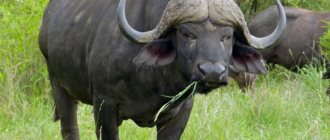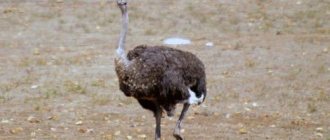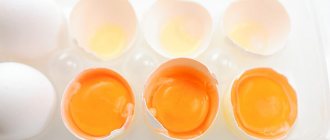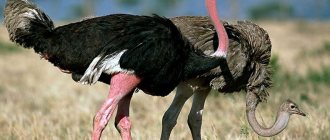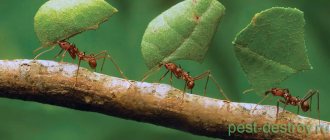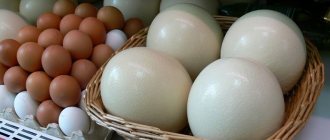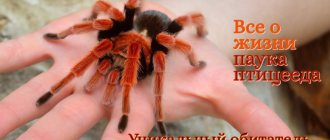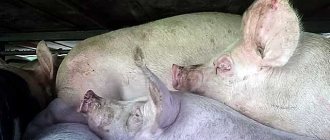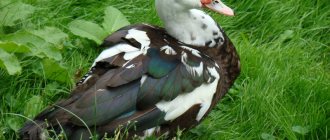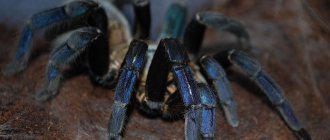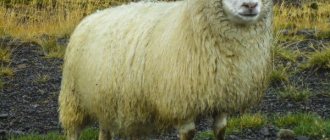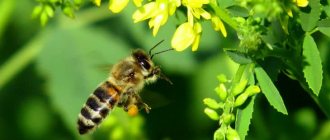Feeding and keeping turkeys and turkey hens
Breeding Big 6 cross turkeys at home The nutrition of domestic crosses should be wisely planned.
They are given food 3 times a day. The main thing is not to overfeed birds, which are already prone to obesity. In the morning they are fed wet, balanced food, and in the evening - dry food. Food must contain the required amount of calcium, phosphorus and vitamins. Turkeys are fed grains, meat, fish meal and grass.
It is necessary to ensure that the turkey is well maintained. The adult is frost-resistant, but the temperature in the poultry house should not be below +5 degrees.
You can get up to 100 eggs from one laying turkey per year.
Birds are susceptible to drafts and humidity. They need to change the bedding twice a week and prevent condensation from forming on the walls. The room must be ventilated regularly.
Rules for feeding the Big 6 breed
Turkeys are fed at the same time.
The Big 6 diet depends on the age of the individual:
- Newborn turkey poults are given crushed eggs.
- On the 3rd day, the chicks are fed with grated carrots, chopped herbs and other vegetables. Gradually, fermented milk products, barley, wheat and corn are added to the diet.
- Grown-up chicks are given special industrial feed. They are poured clean water and shell rock is sprinkled on them, which promotes digestion.
It is necessary to monitor the diet so that the turkey eats all the food no later than 20 minutes after it is given. Otherwise, the food will spoil and the chick will get an upset stomach.
Keeping turkey poults
Feeding turkey poults There is no clear opinion about the ease of keeping representatives of Big 6. Some poultry farmers consider them capricious, while others claim that they are resilient and easy to grow.
The main thing is to follow the recommendations of experts:
- The room intended for young animals needs to be warmed up. The brood is provided with a temperature regime of +30 degrees, gradually reducing the temperature to +22 degrees. When the body begins to grow feathers, the bird may overheat, so monitoring the temperature in the room is vital.
- Before settling the young animals, their habitat is disinfected and equipped with drinking bowls and feeders.
- When the chicks grow up, they need to be provided with a place to walk. This will help strengthen muscle mass. The area must be sown with perennial grass. Turkeys will learn to get their own food.
Be sure to read:
Turkey diseases: symptoms and treatment at home
Feeders and drinkers - what features need to be taken into account
Big-6 cross turkeys are distinguished by a large sternum. It is important to choose the right container for Big-6 feed and water. If the drinker tips over and water spills, dampness will form that is harmful to turkeys.
Wet young animals often get sick and die. Moisture in the room slows down development.
When choosing and installing containers, follow the recommendations of experienced farmers:
- There are a lot of drinking bowls and feeders so that the birds do not crowd near them, otherwise they will be malnourished.
- Containers must be securely secured so that they do not tip over.
- The dishes are chosen to be wide and shallow. At first, the young animals are fed from plywood, gradually becoming accustomed to special feeders.
Killer exit
Slaughter yield is slaughter weight to live weight, expressed as a percentage. It depends on the type of animal, its breed characteristics, age, sex and fatness. It is determined by which parts of the body are included in the slaughter mass.
The best indicators in terms of slaughter yield and meat quality are provided by animals of specialized meat breeds. They have increased early maturity, well-developed and fine-fiber muscles with desirable layers of fat, which give the meat juiciness and tenderness.
Rabbits are slaughtered in November-December after molting, when the hair becomes thick and shiny. Pre-slaughter fasting should be 12 hours with plenty of water provided. The most optimal age for slaughtering rabbits of all breeds is considered to be 110-130 days old, except for black-brown and gray giants. They are kept for up to 160 days.
When slaughtering chickens , ducks , geese , turkeys , the bird is taken by the head and the throat is cut 1.5-3 cm below the earlobe or ear (in waterfowl). The duration of bleeding is 1.5-3 minutes. Removing the feather and down covering from carcasses is very difficult. Thus, when processing poultry manually, labor costs for removing feathers account for 80% of all labor costs for processing the carcass. The quality of the carcass is directly dependent on the thoroughness of feather removal. If there are rips and scratches on the carcass, then the grade of such carcass is reduced regardless of its fatness. When removing feather cover, they also take into account the need to preserve the quality of the feather itself, especially down, which is a valuable raw material for the manufacture of various feather and down products.
How to prepare livestock for slaughter
Turkeys can be slaughtered from the moment they reach a weight of over 12 kg; most often birds have this weight at the age of 8 months. Broiler varieties go under the knife even earlier, at 4-6 months. Increasing the slaughter time leads to the fact that meat products lose their tenderness.
Producers are slaughtered when they are 2-3 years old: at this point they cease to be valuable for the reproduction of the herd. After the meat has been processed, it can be consumed.
Worth knowing. It is recommended to carry out slaughter before the birds begin to change their feather cover. Otherwise, you won’t get a perfect carcass, because there will be a lot of stumps left in it.
Preparation of birds before slaughter is carried out as follows:
- before the date of slaughter, the selected livestock is transplanted into a dark room (without feeders, only with drinkers);
- It is recommended to keep turkeys without feed for 12-14 hours;
- You can add Glauber's salt to the water; it helps to liquefy stool and facilitate its faster removal from the body.
Subject to the conditions of keeping and the technology of fattening processes, successful breeding of turkeys for meat is guaranteed.
conclusions
When breeding any poultry, you want to get a good result, because a lot of energy and money are invested in buying and raising it. Many poultry farmers have switched to raising turkeys. Because they are able to gain a lot of mass in a very short time. In addition, turkeys have good egg production and are also good and caring mothers. There are a little more than 30 breeds and crosses, so there is plenty to choose from:
- Meat giant crosses. Representatives of broiler breeds are white broad-breasted, Canadian broad-breasted broiler, BIG 6 cross and some others.
- Undemanding in terms of feeding and maintenance. Tikhoretsk black, Kuban, French and other breeds.
- Good hens. White Moscow, bronze broad-chested, chiton and others.
- In any case, by choosing the option you need, by the end of the breeding season you can get a lot of dietary meat and eggs for reproducing replacement young stock.
The pros and cons of raising turkeys as a business, read this link.
https://dacha.one/zhivotnye/porody-indyukovhttps://stroy-podskazka.ru/indyuki/skolko-vesyat/https://poferme.com/ptitsy/indyuki/kakaya-samaya-krupnaya.html
Features of raising and fattening turkey poults for meat
Raising turkey poults for meat requires special attention in the first 15-20 days of the chicks' life. Since their thermoregulation is still poorly developed, it is necessary to ensure the correct temperature regime - 35°-37° and air humidity 75%. After 10 days, these indicators gradually decrease. In the first days of rearing, it is necessary to install 24-hour lighting so that the chicks can find food and water.
Approximate feeding rates for turkey poults
When purchasing turkey poults for fattening, you should choose active chicks that stand firmly on their feet, with clean fluff and shiny eyes. A scarred umbilical cord, a dry bottom, and a retracted yolk are also signs of a healthy turkey. Typically, turkeys are raised for meat in the spring, so that over the summer they can gain the necessary weight by autumn.
In the first 10 days of life, the chicks are fed every two hours. Usually a special food is prepared, which includes:
- Hard-boiled eggs;
- Wheat and corn flour;
- Green onions;
- Carrot;
- Wheat bran;
- Cottage cheese.
It is better to serve this food on pieces of paper, and from 3-5 days you can accustom them to feeding from special troughs. We should not forget about the presence of fresh water in the drinking bowls; uneaten food must also always be removed, otherwise it will turn sour.
After three days, poultry farmers advise placing separate feeders for fine river sand and fish meal, since the chicks are in dire need of mineral supplements. In the second week of life, complementary feeding with dry food is added to feeding with wet mash, which is poured into separate trays.
These feeds consist of carefully crushed grain (60%), peas (25%), sunflower meal (2%), chalk (5%). After 10 days from the moment of hatching, it is necessary to introduce large quantities of young greens into the diet of turkey poults - nettles, onions, clover, alfalfa, dandelion. Up to 1 month there is a transition to 6 meals a day.
Upon reaching the age of two months, the chicks are fed 4 times a day with the same wet mash with an increased amount of inexpensive fish or animal mince based on curdled milk.
Compound feed intended for other farm livestock is not suitable in this case
It is important to add fats, salt, chalk, shell, bone meal to the diet
How much time will be spent raising turkey poults for slaughter depends on the quality of feed and the correct feeding regime. During the summer they should reach their greatest weight, since during this period all conditions for pasture feeding are created.
On average, a turkey is ready for slaughter in 4-5 months, this is how much feed is required to raise one individual, not counting greens and other additives:
- The female will eat 16 kg of feed in 4 months;
- The male will need 32 kg over the same period of time.
Upon reaching 4 months of age, young turkeys are prepared for slaughter using the intensive feeding method. It involves forced food intake. For this purpose, special dumplings are prepared, which include:
- Corn flour – 20%;
- Oatmeal -15%;
- Wheat bran – 25%;
- Barley flour -25%;
- Salt – 1%;
- Baker's yeast -3%;
The components are mixed with milk or water and narrow and long pellets are formed. The turkey's beak is opened and the prepared food is introduced. This procedure is carried out 2 times a day, which allows you to add 25% of your daily food intake to natural feeding. In addition, there is a daily weight gain of 100 g.
This fattening lasts 15-25 days, but after 10 days the turkey is ready for slaughter. Turkeys require a little more time to be fed until they are fully mature.
By observing the conditions for keeping and fattening turkeys and providing a balanced diet, you can guarantee success in raising birds for meat.
Have you ever experienced unbearable joint pain? And you know firsthand what it is:
- inability to move easily and comfortably;
- discomfort when going up and down stairs;
- unpleasant crunching, clicking not of your own accord;
- pain during or after exercise;
- inflammation in the joints and swelling;
- causeless and sometimes unbearable aching pain in the joints.
Now answer the question: are you satisfied with this? Can such pain be tolerated? How much money have you already wasted on ineffective treatment? That's right - it's time to end this! Do you agree? That is why we decided to publish an exclusive interview with Professor Dikul, in which he revealed the secrets of getting rid of joint pain, arthritis and arthrosis.
Secrets of success
To make keeping turkeys a truly profitable business, it is important to follow basic recommendations for the care and nutrition of birds.
- Food should be varied and nutritious.
- Regular walking in sufficient territory.
- The presence of fresh grass enriched with vitamins in the diet.
- The food should contain shells or limestone as a source of minerals.
To obtain turkeys weighing 12 kg by mid-winter, experienced farmers recommend taking day-old turkey poults in early to mid-spring. If the active growth of the bird occurs in the autumn-winter period, the owner needs to take care of preparing brooms from birch, linden, and fruit tree branches. An excellent remedy against many diseases is finely chopped pine needles. You can add this ingredient from the first month of life of turkey poults, starting with a small portion, gradually increasing the volume of pine needles in the food.
One of the most important components of turkey nutrition is the mineral component. Shells and limestone will allow the bird to build a strong skeletal system. You can start adding mineral components to bird food when your pets are one month old.
Turkey room
The conditions for arranging the place depend on the chosen placement method: in a cage or in a poultry house.
Cellular content
Cages for breeding turkey poults can be bought in specialized stores, or you can make them yourself. In the latter case, the size of the cell cell should be 16x16 mm or 24x24 mm, and up to 50 cm in height. This house is good for housing chicks up to 10 days old. The heating system can be organized using infrared lamps.
Considering the small size of turkey chicks, it is not recommended for chicks to be on a mesh floor during the first 3 days of life.
Rules for organizing cellular space:
- Feeders should be placed behind the cage: this will help avoid scattering and trampling of food. It is advisable to purchase a groove feeder with a 2-centimeter side.
- The vacuum drinker can be replaced with a nipple drinker, since the water supply in the latter option is dosed. In addition, in such a tank the water will not stagnate, and, accordingly, harmful microorganisms will not develop.
- To maintain cleanliness in the cage, it is recommended to install a mesh floor with a tray for litter, which should be cleaned 2 times a day.
- After a few months, a hard floor will need to be installed. This measure is necessary in order to avoid the appearance of namins in the chest area, which negatively affect the presentation of the carcasses. Softwood shavings or fresh straw can be used to provide a hard surface. The bedding layer should be at least 15 cm from the dry floor covered with slaked lime. It should be changed once a week. You can also use a combined flooring option: 2/3 of the area should be made of planks, and the remaining part should be covered with deep flooring.
Poultry house arrangement
It is enough to follow simple rules to properly organize the space:
- Since birds react poorly to damp air, the room should be dry. On average, one turkey needs 1 square meter of space.
- Windows in the turkey house should make up 1/10 of the total floor area.
- It is better to place perches at the same level: this will help avoid competition for places and prevent droppings from falling on birds sitting on lower tiers. The crossbars should be 60 cm apart and located 80 cm from the floor. Perches are usually made from beams 7 cm wide and 10 cm long. Under the perches it is necessary to place retractable trays for collecting garbage. The number of nests is calculated as follows: at least 1 nest is required for 5 birds.
- Near the perches or in the walking area in the warm season, you should definitely pour a mixture of sand and ash: taking such unusual baths will help the birds get rid of parasitic insects.
It is advisable to install feeders of such a size that all birds can freely reach them at the same time. It is better not to feed turkeys food scattered on the floor: birds are farsighted, and often see only those objects that are at a great distance from them. As a rule, they do not notice what is “under the beak”.
What does mass depend on?
Poultry can gain weight quickly, especially when kept free-ranging in the summer
Not only nutrition affects maximum weight gain, but several factors should be taken into account
Floor. Female turkeys weigh less than males. On average, their indicator differs by 5 kilograms, which is why farmers prefer to raise turkeys for slaughter.
Breed. The breed also plays an important role, since the dimensions of the future turkey and the structural features of its body are genetically determined. With age, the weight of the bird slowly increases; six months after hatching are considered ideal for slaughter. Why this is not difficult to explain, since during this period the turkey gains maximum weight gain if it is kept and fed correctly.
Diet
As for the diet, not only the quantity, but also the quality of food is important, including constant access to water and fine gravel, which helps the digestive system digest grains. Any feed that goes into the turkey pen must be well balanced, which means it has sufficient calories and minerals.
Be sure to include vitamin supplements.
Health. It is not possible to achieve high-quality weight gain from sick chicks, which is why health is not the last factor that should be taken into account. Vaccinated turkeys grow faster because they have a good appetite. Age.
Particular attention should be paid to the breed and its effect on the weight of the turkey. Today, farmers divide groups into weight categories such as:. You can often find producers who claim that turkey poults belong to a meat breed, but they forget to mention which category.
As a result, the farmer, raising the chicks, remains disappointed, because it turns out that in front of him is a bird that belongs to the light category. The maximum weight of a male turkey, which is classified as lightweight, is only 7 kilograms. Females usually grow no more than 5 kg. In this category there are such breeds as Virginian and Tikhoretsk black
You can often find manufacturers who claim that turkey poults belong to a meat breed, but they forget to mention which category. As a result, the farmer, raising the chicks, remains disappointed, because it turns out that in front of him is a bird that belongs to the light category. The maximum weight of a male turkey, which is classified as lightweight, is only 7 kilograms. Females usually grow no more than 5 kg. In this category there are such breeds as Virginian and Tikhoretsk black.
Representatives of the middle category significantly outperform the previously described turkeys. Males can weigh up to 17 kg, while females are only 7 kg. Similar indicators are demonstrated by the bronze and white Moscow breeds. Heavyweights take longer to reach their maximum weight, only at two years of age, but turkeys when weighed show a value of 35 kg, while turkeys only 10 kg. Only males are bred for meat.
Among the most popular breeds are crosses Big-6 and 9, BYuT 8 and 9, as well as hybrid converter.
Averages
At different ages, turkeys weigh differently. On average, an adult turkey at the age of 6 months of a large meat breed should weigh about 12 kg. After hatching, turkey poults weigh only 50 grams, then they quickly but unevenly gain weight. The most active phase is observed in the first month; from the second, the rate of carcass weight gain decreases, but is also at a fairly high level, and this does not depend at all on the breed, be it blue or slate turkeys.
A slight increase can be observed from 9 to 20 weeks; this is a completely normal phenomenon and is not associated with the disease. From 21 weeks, the process of puberty begins, when live weight increases again actively, since the body has to spend a lot of energy, it begins to increase the bird’s appetite. Maturation ends by week 30, during which time the turkey reaches its maximum weight. She will not be able to grow any more, and if there is an increase in mass, it will be very slowly.
If the livestock has suffered an infectious disease, all the birds are sent to slaughter, since they are unsuitable for producing offspring and become infertile. No development in body weight is also observed. To quickly achieve weight gain, some farmers use protein supplements, but they have one major drawback - obesity, which becomes the main reason why females stop laying eggs. At the same time, fat deposits are observed not only in the form of subcutaneous formations, they also cover the internal organs of the bird. In young animals, this phenomenon causes serious pathologies; moreover, such meat is not very popular among buyers, since turkey meat is considered a dietary product.
It is easiest to determine the weight of a small number of birds, but if there are several dozen individuals, each one is not weighed. Select 5 turkeys and calculate the average weight. The resulting number is multiplied by the number of birds in the herd. To find the average weight, the mass of all 5 individuals is added up and divided by 5. This will be the average for a specific livestock.
The most common turkey meat breeds
Broad Breasted White
This breed was developed by American breeders in the 20th century. The bird has a heavy oval body with a convex chest. On the gray heads you can see a very long bright red growth.
Broad Breasted White
Turkeys can gain up to 22 kg of weight. A special feature of the breed is its excellent productivity and the ability to keep and grow in cages. Broad-breasted White turkeys gain optimal weight faster in cages, using the same amount of feed as if they were kept on pasture.
Moscow Bronze
Another breed resulting from crossing local birds with broad-breasted bronze turkeys. Unlike the previous variety, the body of these turkeys is more elongated, the chest is massive and convex.
Moscow Bronze
Birds of this breed are hardy and can graze on pastures, which makes it possible to keep them on private farms without any problems.
Males of the Moscow Bronze reach up to 20 kg of weight, females - up to 10 kg.
Cross BIG-6
A hybrid bred by foreign breeders. This variety amazes with its productivity and early maturity. BIG-6 is white with a dark spot on the chest. The chest is round, the neck is long and powerful.
Cross BIG-6
These turkeys grow in an interesting way, with their weight increasing exponentially. If at the age of three months a turkey chick weighs about 3-4 kg, then after a month he gains all 10 kg. Ultimately, the weight of an adult male can exceed 24 kg. At the same time, BIG 6 consumes relatively little feed - two and a half kilograms of feed per kilo of live weight.
Hybrid Converter
The bird comes from Canada, the meat of which has a particularly pleasant taste. The basis for the crossing was the White Dutch breed and the already mentioned Broad-Breasted Bronze. The breed is considered one of the most widespread throughout the world.
Hybrid Converter
One of the advantages of this bird is its precocity - the Hybrid Converter (or Indoostrich) quickly gains live weight. The weight of males during five months of keeping can reach 20 kilograms or more, the weight of females is usually half that. Earlier we mentioned the ratio of the weight of the bird to the resulting meat; this breed has one of the best ratios - 85%.
Females of the Hybrid Converter breed are capable of producing about 50 eggs per year
Turkeys begin laying eggs at nine months of age and produce about 50 eggs per year. Females willingly take care of their offspring and carefully incubate their eggs. In our country, this breed is in increasing demand due to its unpretentiousness and rapid adaptation to the climate.
BYuT-8
A relatively recently created breed of turkey by English breeders. Externally, this bird looks decorative. The white lush plumage is combined with an arched neck, a bright red growth. The paws are very massive, as is the body.
BYuT-8
On average, an adult turkey of this breed can weigh about 27 kg, and a turkey - 10 kg. But such a mass can only be achieved with proper fattening. Before 4 months, turkeys are given 2.5 kg of feed, after which - almost 3 kg. After 20 weeks, birds need just under 3.5 kg of feed.
Characteristic
Broad-breasted white turkeys were first bred in the United States in the 60s by crossing bronze broad-breasted and white Dutch representatives. Birds are considered representatives of the pheasant family, and their advantages include:
- white plumage color;
- tender meat (and turkey meat is tastier than male turkey);
- precocity;
- high meat yield (80% of carcass weight);
- proper presentation.
This species is bred in Russia in the central and southern regions: Rostov, Voronezh, Astrakhan regions and the Krasnodar Territory.
Broad-breasted white turkeys are classified into light, heavy and medium varieties.
At the age of 100 days, turkey poults stop growing. At this moment, their carcasses have an attractive presentation. The weight of females and males of the light line is 5.5 and 9 kg, respectively, of the medium line - 7 and 15 kg. As for the heavy line, their weight significantly exceeds other species: individuals reach 11 kg, and males weigh approximately 25-30 kg.
Tyson is the largest turkey in the world, who weighed 39 kilograms and belonged to this breed. The heavyweight was raised by Philip Cook, who lives in the UK.
Why doesn't a turkey gain weight?
Turkey poults are not growing well, what should I do? Compared to adult birds, turkeys are sensitive to housing conditions. You should monitor the cleanliness of the room and eliminate sources of drafts.
A particularly dangerous symptom for turkey poults is diarrhea. It can cause developmental abnormalities and even death. Chicks should not be accustomed to adult food, as this can cause digestive upset. The food must be fresh, clean, and free of mold. Prepare wet mash immediately before feeding, as a sour product can cause diarrhea.
Also, the reasons why turkey poults grow poorly can be diseases: mycoplasmosis, coccidosis, conjunctevitis, sinusitis, goiter inflammation, etc.
Important! To prevent diseases, you need to regularly change the bedding, use disinfectant solutions (creolin, potassium permanganate solution, formaldehyde), disinfect equipment and care products
Disease Prevention
In addition to infectious diseases and all kinds of diarrhea, turkey poults often experience leg diseases, which lead to large economic losses. To avoid the occurrence of diseases, children should be provided with space for active pastime from the first days.
When turkey poults have paratyphoid fever, their eyes often stick together due to heavy discharge.
The development of diseases is also provoked by:
- lack of light;
- increase in the recommended percentage of fats in animal feed (6%);
- excessive amounts of corn or soy fed;
- organic fiber deficiency;
- lack of B vitamins;
- overdose of vitamin A;
- dirty or wet litter.
In order for turkey poults to grow up healthy and strong, it is necessary to take preventive measures in a timely manner.
These factors cause the appearance of open wounds on the feet of birds, which, in addition to causing severe pain, also contribute to infection of the body with pathogenic bacteria that deteriorate the quality of meat. To keep your pets' paws healthy and strong, you should exclude each item listed.
With histomonosis, the chicks' heads turn black
In addition, we should not forget about textbook preventive measures:
- feeding only high-quality feed, optimally balanced in composition;
- compliance with temperature conditions;
- timely cleaning and disinfection of cages, poultry houses, as well as any equipment used for feeding or caring for birds;
- it is necessary to raise the younger generation separately from mature individuals;
- Get vaccinated in a timely manner.
Vaccination is one of the most popular preventive measures
With proper care and a well-designed feeding plan, you can achieve 98% safety of the young.
Despite the health problems of turkeys, with proper feeding and care, almost 100% safety of the livestock can be achieved
Dark meat - the reasons for it
Diet or lean meat may, of course, be a priority for you if you are counting your calorie intake and protein intake on a daily basis. However, there are other nutritional considerations when choosing which meat is best for you. The content of vitamins and minerals in different types is not the same.
Poultry, chickens and turkeys, walk but do not fly when raised. Therefore, their chest and wings are not as muscular as their thighs and legs. Wild bird species either fly or walk, so most of their meat is dark.
As I noted above, dark meat gets its characteristic shade from the presence in muscle cells of a special protein, myoglobin, rich in iron. Therefore, it is an excellent source of iron, which many people lack. Compared to white chicken meat, red meat contains more zinc, selenium and B vitamins: riboflavin, thiamine, vitamins B6 and B12.
On the other hand, when deciding which meat is better, there may be difficulties, as white chicken meat contains one of the types of vitamin B, niacin, as well as magnesium, which is good for cardiac activity, which many people lack in the body.
A closer look at the types of meat indicates that they both provide vital nutrients to the human body. If you are focused on improving your health through an extensive list of diets, then make the choice to consume white and red meat wisely. Or choose the one you like best.
Turkey breeding
For beginners, experts recommend starting breeding with mature young individuals. The best option is three or four month old individuals. By this point, they get used to the classic food, and their immunity becomes stronger. When breeding from scratch in a poultry house, it is necessary to have different sexes. One male for 8-10 females. If there are more of them, the male will not be able to properly perform his duties.
North Caucasian silver turkey and turkey
The females incubate the eggs for about a month. The bird should be roosted in the spring. Ideally, there are about 17 eggs under one turkey, and all are freely located under the female. It is better not to place a large number of eggs under an inexperienced turkey that has become a mother for the first time. Place a thin layer of soil at the very bottom of the nest and place dried straw on top. Place the nest in an isolated place, place a drinking bowl and a feeding plate with food nearby.
Hatched turkey poults
Using incubators and brood hens
Turkeys are wonderful mothers who responsibly hatch, and then raise and protect their offspring. Sometimes they are so devoted to their duties that they forget to eat - in this case, forcefully remove the hen from the nest and take her to food. While the turkey is feeding, you can inspect the eggs for scratches or dents. After hatching, it is recommended to immediately place the babies with the hen and keep them with their mother for about 6-8 weeks.
Bronze turkey with chicks
On a home farm, you can use an incubator. Eggs that are intended for incubator rearing must be removed from under the bird and transferred to storage. Place the eggs on the tray with the pointed end down - this saves a lot of space. From the moment the eggs are placed in the incubator until they hatch, approximately 28 days pass. Until day 22 inclusive, turn the eggs 12 times a day so that they heat evenly. Strict temperature conditions must also be observed.
| Day | Dry bulb temperature, °C | Wet bulb temperature, °C | Ventilation flaps |
| 1-3 | 37,8-38 | 29-29,5 | closed |
| 6-12 | 37,6-37,8 | 29-29,5 | slightly open 15 mm |
| 13-25 | 37,5-37,6 | 28-28,5 | slightly open 15 mm |
| 26 | 37,2 | 29-30 | slightly open 20 mm |
| 27 | 37-37,2 | 30-33 | slightly open 20 mm |
| 28 | 37 | 35 | slightly open by 20 mm, 3 hours before sampling, open completely |
Laying eggs in the incubator
Video - Turkeys: breeding and maintenance
In the video, an experienced livestock breeder tells viewers where turkeys came from in Russia. You will learn how to organize the care of a bird from egg to adult. The video discusses the incubation process, as well as the main problems of care and maintenance. You will also see how to properly set up an enclosure and how animals behave on a walk.
What is a killer exit?
Having determined the slaughter weight of an animal, you can calculate the value of the slaughter yield of livestock. This concept implies the ratio of slaughter weight to live weight. In turn, live weight is calculated when weighing a live cow or bull. The resulting ratio is indicated as a percentage.
Of course, the yield of meat depends on the method of determining slaughter weight. But, in addition to this, the meaning may also differ depending on the gender, age, and physiological state of the living creature. The direction of breed productivity is also of great importance. In dairy breed lines of cattle, breeders in nutrition and management focus on obtaining exceptionally high milk yields. Therefore, their meat yield is quite mediocre.
For meat varieties, annual milk yield is minimal. At the same time, the slaughter yield is high, and the meat is of the highest quality. It is distinguished by thin fibers and delicate consistency. In addition, such breeds, as a rule, show high precocity and such cows are not kept on the farm for a long time.
Important! Compliance with slaughter rules is also of great importance in obtaining high-quality meat carcasses of farm animals. The list of such moments is individual and depends on the specific type of living creature.
Cattle slaughter
Meat bulls are usually slaughtered in the first year of their life. After this period, feed conversion drops significantly, which reduces the rationality of keeping. Before slaughter, each cow or bull is carefully examined by a veterinarian (in industrial enterprises) or the owner of the animal. The purpose of such an inspection is to identify various diseases that may affect the quality of meat. When an incurable disease is diagnosed, the carcass is immediately disposed of.
Cattle slaughter
Slaughter is also adjusted in case of recent vaccination of cattle against rabies, anthrax, and foot-and-mouth disease. When treated with antibiotics, the delay in slaughter depends on the specific drug.
Attention! Animals under 2 weeks of age are not allowed to be slaughtered.
Before slaughtering cattle, a preparatory stage is required, which includes the following points:
- thorough washing of livestock, cleaning of wool and hooves;
- starvation diet for up to 12-18 hours (up to 6 in young animals);
- weighing the cow to determine live weight and further calculate slaughter weight.
The period of fasting cannot be prolonged beyond what is necessary, as this leads to a drop in the meat productivity of the animal by 3-4%. It is not recommended to hit or frighten the animal during the preparatory stage. Such treatment causes severe stress in the cow, as a result of which the structure of its meat and blood composition can change, which leads to a decrease in the value of the resulting product.
Slaughter is usually carried out in the following sequence:
- The animal is secured against a strong support and stunned with a blow from a heavy blunt object.
- They are hung on a horizontal beam or placed at an angle, after which the carotid artery is cut and bleeding is carried out.
- Remove the skin.
- They are dismantling the carcass.
Before complete disassembly, the slaughter weight is determined by weighing.
Attention! If an animal is slaughtered in the summer, then the procedure is carried out in the morning, before flies appear and the meat begins to dry quickly under intense heat. In winter, slaughter occurs at any time of the day.
In addition to the standard slaughter method, industrial livestock breeding often uses special pneumatic hammers, which greatly simplify the process. Electric shock is also considered a popular and more humane way of killing cattle. In the latter case, a 5-15 second exposure causes anesthesia of the animal for 5-7 minutes, which is quite enough for further cutting of the jugular vein and bleeding.
Reference. Proper slaughter of cattle and other animals allows you to reduce losses of meat products and preserve them much longer.
